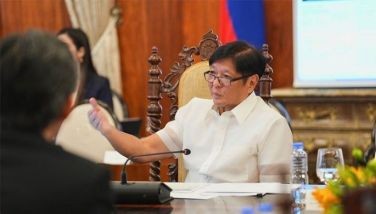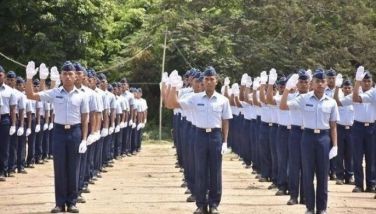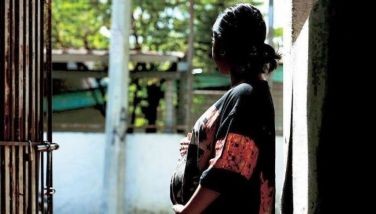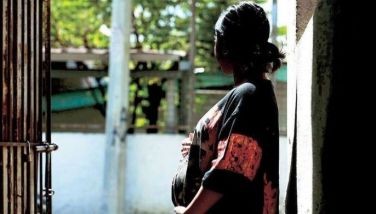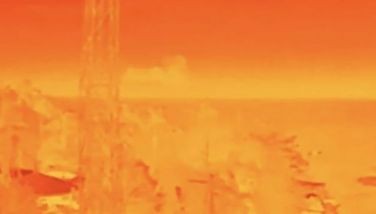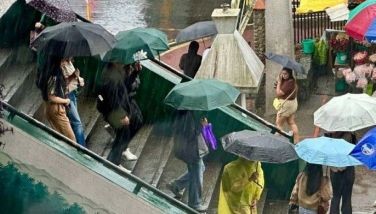Tears shed for ‘Lolong’
MANILA, Philippines - Filipinos yesterday mourned the death of “Lolong†as efforts got underway to determine the cause of the crocodile’s death.
The municipal government of Bunawan was set to hold funeral rites for the world’s largest saltwater crocodile, whose captivity lifted the town from obscurity.
“The whole town, in fact the whole province, is in mourning. My phones kept ringing because people wanted to say how affected they were,†Bunawan Mayor Edwin Elorde said.
Elorde said wildlife experts were set to autopsy Lolong Monday to determine the cause of the reptile’s death.
Glen Rebong, head of the Palawan Wildlife Rescue and Conservation Center, will reportedly lead the autopsy.
Shortly after Lolong’s capture in 2011, the Quezon City Parks and Wildlife had offered to take custody of the crocodile.
Bunawan officials were planning to preserve the crocodile’s remains, and keep it in a museum for tourists to see. Since his captivity, Lolong had been drawing tourists, generating revenue for the local government, and sparking development in the area.
“With modern technology to preserve even human bodies, we are actually contemplating not to bury him, but will preserve him intact. If this is possible then we will do it,†said Elorde.
He said Agusan del Sur Gov. Adolph Edward Plaza has expressed support for the plan to “immortalize†Lolong.
“I’d like them to see the crocodile that broke a world record and put our town on the map,†he added.
The one-ton reptile was declared dead Sunday, a few hours after flipping over with a bloated stomach in a pond at the town’s eco-tourism park.
The mayor said a monument in memory of Lolong would be built in Bunawan.
He said villagers planned to perform a tribal ritual, which involves butchering chicken and pigs as funeral offerings, to thank forest spirits for the fame and blessings the crocodile brought them.
A group of Christians would offer separate prayers before the autopsy.
The rites would be held at the eco-tourism park, where Lolong had emerged as a star, attracting foreign tourists, scientists, and wildlife publications like National Geographic, to the town.
Environment Secretary Ramon Paje has sent a team of veterinarians and biological experts to Bunawan to help determine the cause of Lolong’s death.
Paje said the team is composed of representatives from the Protected Areas and Wildlife Bureau (PAWB) and the National Museum, with the latter supposedly to ensure that the reptile’s skin would be preserved.
Bunawan special spokesperson for Lolong, Welinda (not Rowena as earlier reported) Asis-Elorde, denied having said the crocodile had swallowed a nylon cord.
Elorde, sister in-law of the mayor, clarified that what she had told The STAR was that the crocodile defecated a very fine nylon rope.
“These are different. People might say Lolong died because he had swallowed a nylon (rope),†she said.
“We have been alternately feeding him with meat and poultry, and there was no way he could have eaten anything other than that,†she added.
She also clarified that Lolong’s caretaker was Loloy, not Ronnie Sumiller, a crocodile expert based in Palawan who had been helping monitor the giant reptile.
Meanwhile, Philip Dizon, proprietor of the Davao Crocodile Park, expressed belief that super typhoon “Pablo†might have contributed to Lolong’s death.
“I think so. Pablo may have caused it also because it’s been getting cold in the area after the storm struck last December,†said Dizon, adding wild crocodiles like Lolong are sensitive to temperature changes although they have the capability to travel to places where the climate is more suitable.
Since his capture, Lolong had been kept in an enclosure at the Bunawan Eco-Park and Research Center where visitors came to see him.
Dizon said having been enclosed and not having enough space to bask and move around might have also contributed to the crocodile’s death.
He said Lolong had been in captivity for over a year already, and that it had adapted to the enclosure and to the food being fed to him until Pablo struck last December.
“Residents noticed a change in temperature in the area, and that it was getting colder than usual after the typhoon. But Lolong had been kept in the same enclosure in spite of the fact that there was no thermo regulation. Big wild crocodiles are sensitive to temperature,†Dizon told The STAR, as he pointed out that people should wait for the result of the autopsy.
Last year, the Guinness World Records proclaimed the immense creature – measuring 6.17 meters (20.24 feet) in length, and weighing 2,370 lbs. (1,075 kilograms) – as the largest saltwater crocodile in captivity.
Lolong dislodged from the top spot an Australian crocodile that measured more than five meters (17 feet) long and weighed nearly a ton. He was named after an environmental officer who died of a heart attack after traveling to Bunawan to help hunt the crocodile.
The beast, estimated to be more than 50 years old, was blamed for a few deaths in the village. It has also come to symbolize the rich bio-diversity of the Agusan marsh, where it was captured in September 2011 following a government-sanctioned hunt. – AP,Ben Serrano, Rhodina Villanueva, Edith Regalado
- Latest
- Trending
















